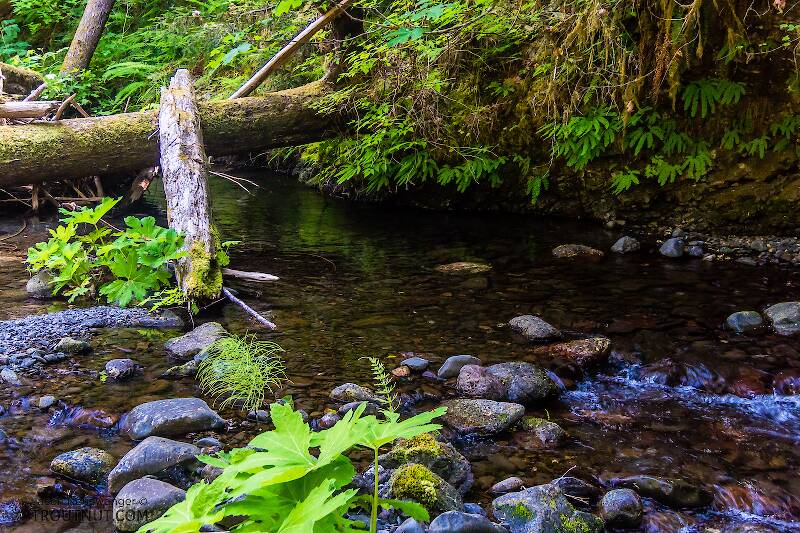
Blue-winged Olives
Baetis
Tiny Baetis mayflies are perhaps the most commonly encountered and imitated by anglers on all American trout streams due to their great abundance, widespread distribution, and trout-friendly emergence habits.
Featured on the forum

This specimen resembled several others of around the same size and perhaps the same species, which were pretty common in my February sample from the upper Yakima. Unfortunately, I misplaced the specimen before I could get it under a microscope for a definitive ID.

Troutnut is a project started in 2003 by salmonid ecologist Jason "Troutnut" Neuswanger to help anglers and
fly tyers unabashedly embrace the entomological side of the sport. Learn more about Troutnut or
support the project for an enhanced experience here.
Caddisfly Genus Banksiola (Traveller Sedges)
This is a famous lake-dwelling genus about which I have not found much information.
Genus Range
Discussions of Banksiola
Banksiola
4 replies
Posted by Entoman on Jan 14, 2011
Last reply on Jan 22, 2011 by Entoman
My understanding is the two most important species are B. selina (East) and B. crotchi (West). Supposedly of minor importance in the East but very important in certain areas of the West. Where they do occur they seem to be very abundant. Current thought in entomological circles is that selina is now synonymous with crotchi.
It's far and away the most important large stillwater caddis I've come across because of its hatching behavior. Unlike other large lake dwelling caddis I've observed, they seem to exhibit all three traits that make them valuable to anglers. It's activity is diurnal, they emerge in open water, and they do this synchronized in large numbers over several hours. It gets even better! They don't fly off but scamper across the surface until they reach shore. This trip may cover a distance covered in yards not feet (once watched one go an estimated 50 yds into shore before I lost site, hoping to see a big rise that never happened...
The best fishing is on soft evenings. Use stiff tippets and any number of green bodied deer hair winged dries in the appropriate size. Spot casting to rises or attempts to lead them usually proves futile as the fish are usually covering water pretty fast. What works for me is to cast fan fashion as far as is comfortable, stick the rod under the casting arm and strip back with both hands to avoid pauses in the retrieve while matching the speed of the natural. Hold the line delicately because the takes can be vicious! Experience has shown the fish are more selective to the appropriate motion than differentiation size or even color of pattern. Best are those designed to skate leaving the proper "V" wake and that float well.
For reasons unknown (maybe due to atmospherics messing with a clean emergence?) they will sometimes swim around in a circle whirligig fashion. On evenings when this behavior predominates, the pupa are a more consistent bet throughout the hatch, either swam shallow with a strip retrieve or raised from the bottom using a long tippet. Hard to beat the traditional Carey Special in the appropriate color for this. Unless of course, somebody can come up with a way to make their dry fly swim around in circles.
It's far and away the most important large stillwater caddis I've come across because of its hatching behavior. Unlike other large lake dwelling caddis I've observed, they seem to exhibit all three traits that make them valuable to anglers. It's activity is diurnal, they emerge in open water, and they do this synchronized in large numbers over several hours. It gets even better! They don't fly off but scamper across the surface until they reach shore. This trip may cover a distance covered in yards not feet (once watched one go an estimated 50 yds into shore before I lost site, hoping to see a big rise that never happened...
The best fishing is on soft evenings. Use stiff tippets and any number of green bodied deer hair winged dries in the appropriate size. Spot casting to rises or attempts to lead them usually proves futile as the fish are usually covering water pretty fast. What works for me is to cast fan fashion as far as is comfortable, stick the rod under the casting arm and strip back with both hands to avoid pauses in the retrieve while matching the speed of the natural. Hold the line delicately because the takes can be vicious! Experience has shown the fish are more selective to the appropriate motion than differentiation size or even color of pattern. Best are those designed to skate leaving the proper "V" wake and that float well.
For reasons unknown (maybe due to atmospherics messing with a clean emergence?) they will sometimes swim around in a circle whirligig fashion. On evenings when this behavior predominates, the pupa are a more consistent bet throughout the hatch, either swam shallow with a strip retrieve or raised from the bottom using a long tippet. Hard to beat the traditional Carey Special in the appropriate color for this. Unless of course, somebody can come up with a way to make their dry fly swim around in circles.
Start a Discussion of Banksiola
Caddisfly Genus Banksiola (Traveller Sedges)
Taxonomy
5 species (Banksiola calva, Banksiola concatenata, Banksiola crotchi, Banksiola dossuaria, and Banksiola smithi) aren't included.

